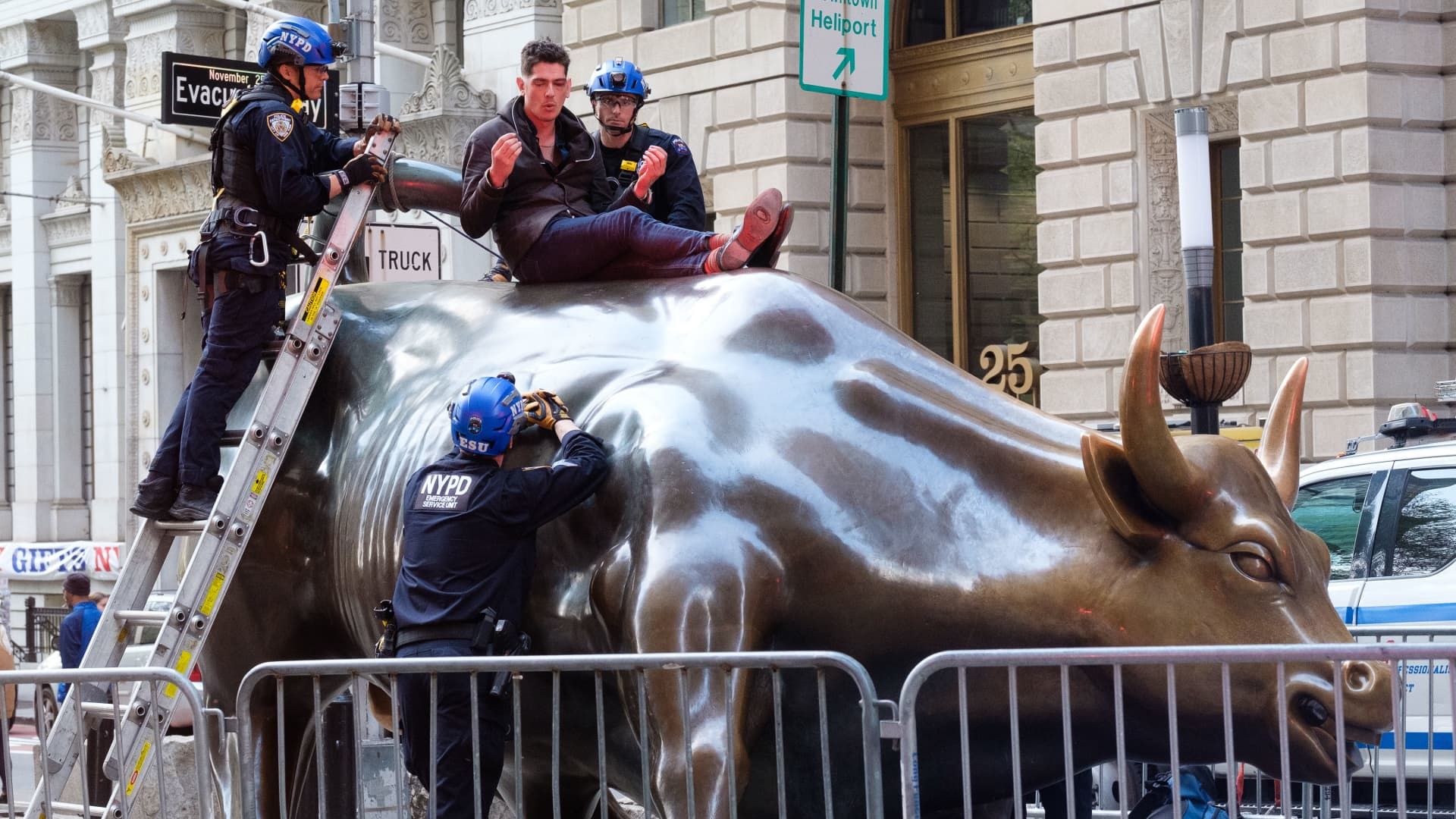Don’t get too bullish yet
NYPD Emergency Service Unit officers negotiate with a man who climbed the Charging Bull sculpture in the Financial District, Manhattan, New York City on Sunday, April 16, 2023.
This report is from today's CNBC Daily Open, our new, international markets newsletter. CNBC Daily Open brings investors up to speed on everything they need to know, no matter where they are. Like what you see? You can subscribe here .
The bears have gone into hibernation and the bulls are charging in. Or so they say.
The S&P 500 inched up 0.11%, the Dow Jones Industrial Average added 0.13% and the Nasdaq Composite climbed 0.16%. Those don't sound like impressive numbers (though any gain should be celebrated), but when viewed against a longer timeframe, they reveal a striking upward trend.
Friday's gain gave the Nasdaq its seventh consecutive winning week, a feat not seen since November 2019. The tech-heavy index was juiced by Tesla's 4% jump — its 11th straight positive day — after General Motors announced it would use the electric vehicle company's charging network.
The S&P had four straight weeks of gains, but more significantly, it's up 20% from its October low. Bank of America technical strategist Stephen Suttmeier even thinks the S&P could shoot up to 5,000 by June next year.
Not everyone's convinced, though. JPMorgan's Michele, who oversees more than $700 billion in assets for the bank, said markets today "remind me an awful lot of that March-to-June period in 2008," when problems in banks and real estate were "largely dismissed" by traders.
Michele's "highly confident that we're going to be in recession a year from now." Indeed, things aren't looking rosy for the corporate world. Financial data company FactSet expects second-quarter corporate earnings for the S&P to decline 6.4% year over year, based on the pessimistic expectations companies have issued. And a recession would, of course, mean bad times for markets.
"Everything we own in our portfolios, we're stressing for a couple quarters of -3% to -5% real GDP," Michele said.
In sum: Despite calls that we're in a new bull market, it's not so certain, especially since the S&P is still more than 10% off its all-time high. Keep an eye out for the U.S. consumer price index and the Federal Open Market Committee meeting this week for clearer signs on whether the S&P is really on track to welcome the bulls.
Source: CNBC


